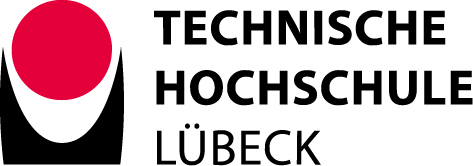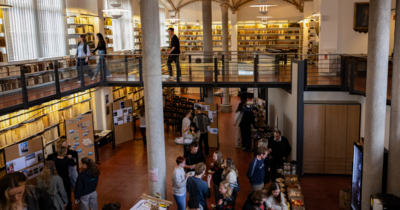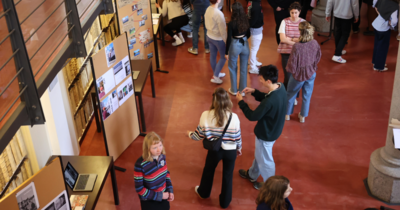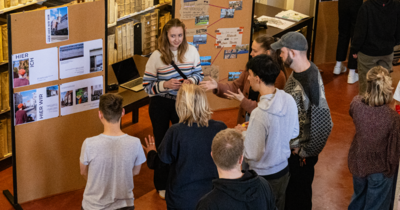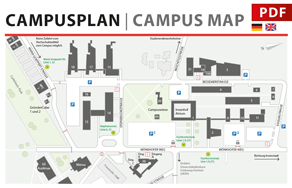During the project, they explored the city’s streets, interviewed its residents, and documented their personal stories, providing an authentic view of everyday life in Lübeck. The exhibition not only showcased the images but also provided a space for the exchange of ideas between the students and attendees, fostering a dialogue about urban development and the relationship between people and their environment.
Asta Wiberg, a student from Denmark, shared details about the work of her group. They interviewed Norbert Hochgürtel, an architect from Lübeck. Asta Wiberg says: I really liked his thoughts on how children look for places to meet and play, and how important it is to think about the environment when planning a city.
Wiberg mentioned that she found his ideas valuable because she stressed that people need to be involved in decisions about the future of the city to make sure it benefits both the environment and the community.
Asta Wiberg’s group also caught the eye of Svenja Müller, a research assistant at TH Lübeck. Wiberg explains that the vacant space has the potential to transform the city centre. Finally, Asta Wiberg shared her ideas about the ideal urban space for young people: It’s very important to have affordable housing and public spaces that are accessible for everyone, with fewer cars and good public transport.
She emphasized the need for spaces that are inclusive and accessible to all, especially for young people who need places to socialize.
Emma Jarchow and Kim Kaperschmidt, two students from TH Lübeck, were also among those who shared their insights on the event and project. They had the opportunity to interview Anton Brodmann, a local resident who moved to Lübeck 11.5 years ago to study at TH Lübeck and later made the city his home. Among many places Anton Brodmann visited with Emma Jarchow and Kim Kaperschmidt, Obertrave stood out the most. Lübeck was charming enough for him to stay
,Jarchow and Kaperschmidt comment. Visualizing an ideal urban space, Jarchow and Kaperschmidt think: A good example for indoor opportunities is the so called Übergangshaus.
About BELT Plan & Network Initiative
The event took place as part of the BELT Plan & Network Initiative, which is funded by the Interreg Deutschland - Danmark program. Behind the BELT Planning & Network Initiative are Roskilde University and TH Lübeck as well as the Zealand architecture studio Rural Agency. The initiative aims to initiate a collaborative process for the new region - for and with the citizens and stakeholders of the region, especially with the future generation. https://www.beltplatform.org/
